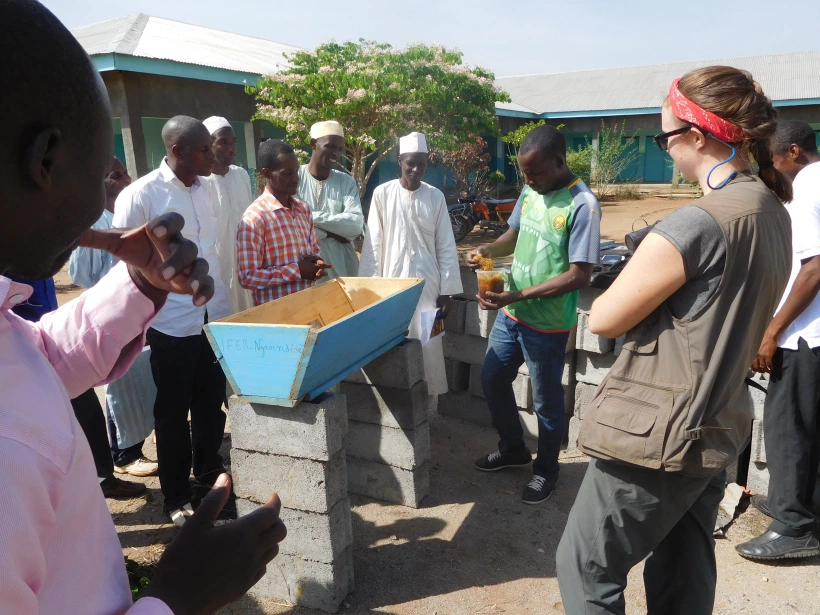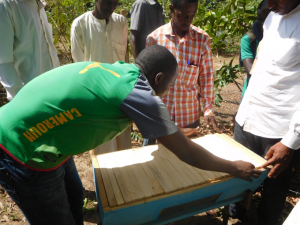Pictured Above: A modern beekeeping training in Ngaoundéré, Cameroon in April 2019
I am a former Peace Corps Volunteer and founder of a modern beekeeping group in Cameroon, West Africa. The following is an excerpt from my master’s thesis for a MA in Climate Change and Global Sustainability from the School for International Training titled “Apiculture Adaptations in a Shifting World: The Beekeeper’s Experience Across the Globe” and includes a request for beekeeping survey participants for ongoing research.
Climate change impacts agriculture directly via rising temperatures, droughts, increased flooding and extreme weather events, and decreasing crop yields. Apiculture does not escape the negative impacts of globally rising temperatures, and increasing drought has been found to reduce the overall productivity of bees and their hives. As increasing droughts and rising temperatures are to be expected under the circumstances of climate change, plants will most certainly be negatively impacted and threatened . In a dry climate, pollen production decreases, and the overall nutritional quality of honey produced by bees decreases. Not only does climate change reduce honey yields due to increased water stress and resulting decreased pollen production in flowering plants, it also limits the arable land where bees can produce enough honey to survive.
In a world where climate change could increase our reliance on insect pollination services for heat stressed crops, and global agriculture in general is more dependent on pollination, the impact these shifts in temperature and rainfall have on bees is a cause for concern. Honey and pollination industries are currently limited by foraging resources in areas experiencing habitat loss, and the expansion of pollinator dependent crops such as the soybean in recent decades have been tied to a decrease in crop diversity and pollinator services.
Some methods to mitigate the impacts of climate variability on beekeeping include: planning ahead for necessary resources before and after crop flowering, reducing fragmentation of farm land to ensure the possibility for range shifting in response to a changing climate, and improving non-crop flowering resources (planting hedgerows, cover crops as supplementary forage for bees).
To participate in my survey on adaptive beekeeping, please go to https://forms.gle/w8BoYE6tY2Q78aWY9 or scan the QR code below











